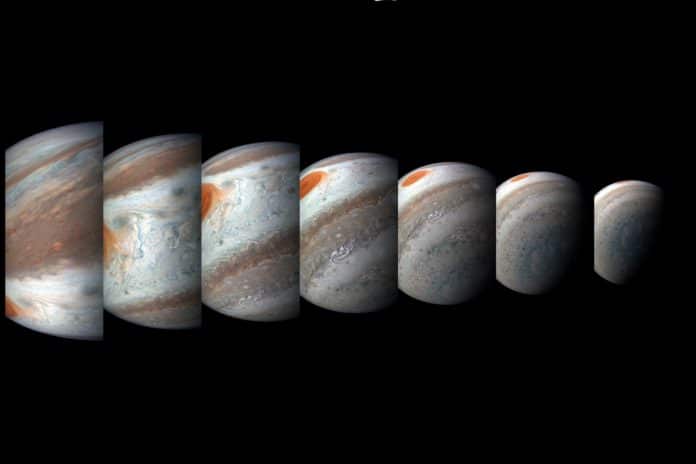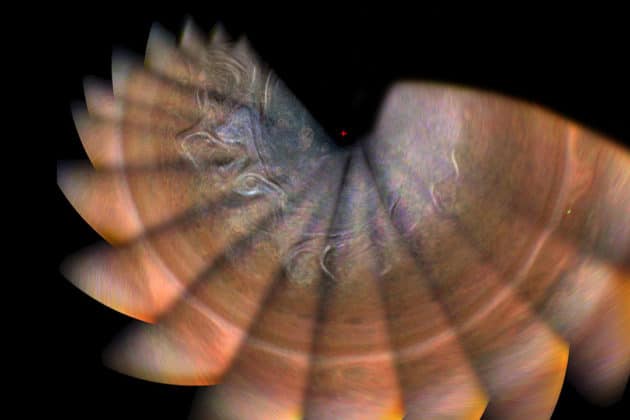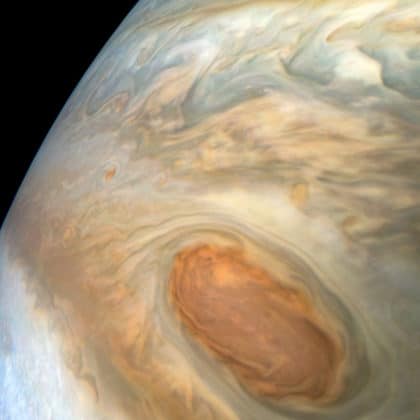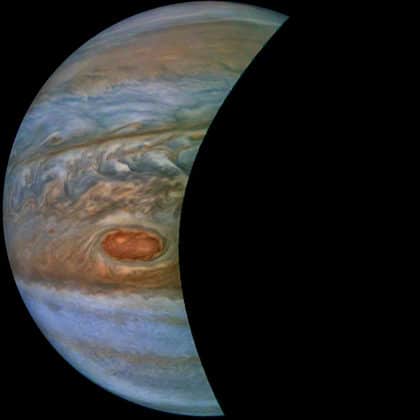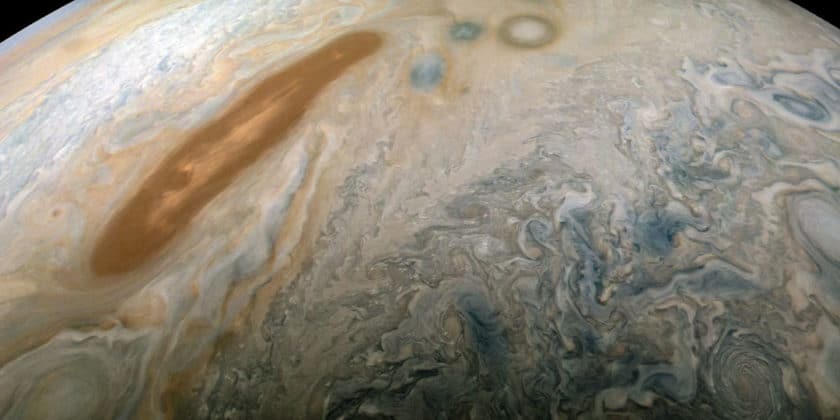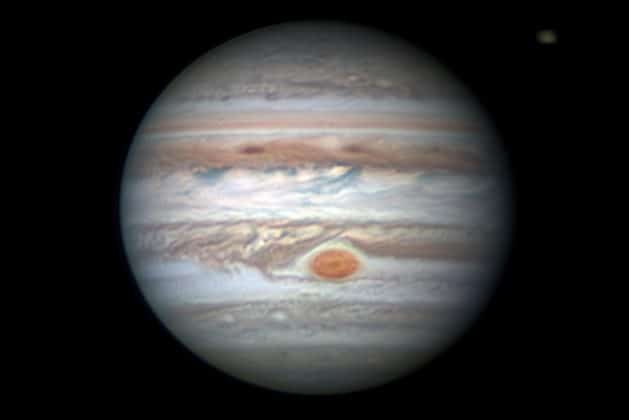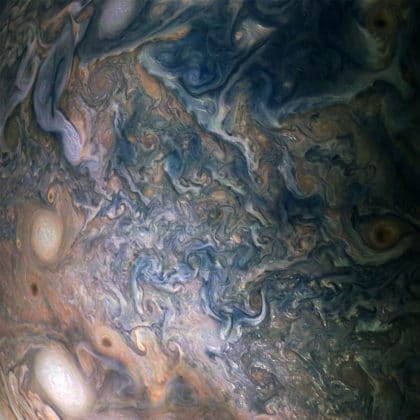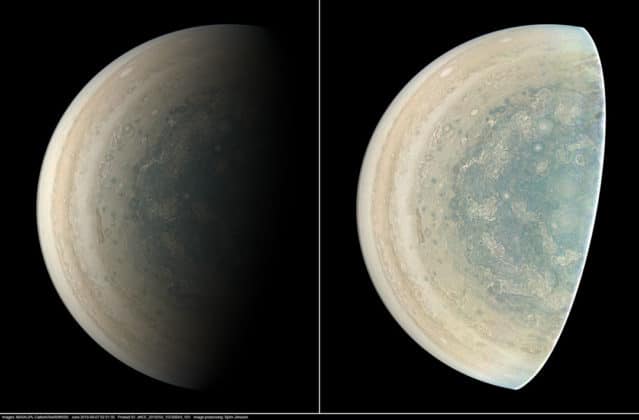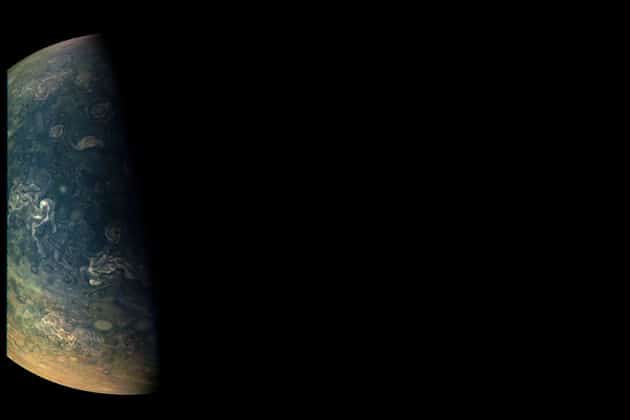Launched on Aug. 5, 2011, from Cape Canaveral, Florida, the spacecraft entered orbit around Jupiter on July 4, 2016. It then started collecting data in earnest on Aug. 27, 2016.
During these flybys, Juno’s suite of sensitive science instruments probes beneath the planet’s obscuring cloud cover and studies Jupiter’s auroras to learn more about the planet’s origins, interior structure, atmosphere, and magnetosphere.
Now, on Dec. 21, at 8:49:48 a.m. PST, the spacecraft will be 3,140 miles (5,053 kilometers) above Jupiter’s cloud tops and hurtling by at a healthy clip of 128,802 mph. This will be the 16th science pass of the gas giant and will mark the solar-powered spacecraft’s halfway point in data collection during its prime mission.
Jack Connerney, Juno deputy principal investigator from the Space Research Corporation in Annapolis, Maryland said, “With our 16th science flyby, we will have complete global coverage of Jupiter, albeit at coarse resolution, with polar passes separated by 22.5 degrees of longitude. Over the second half of our prime mission — science flybys 17 through 32 — we will split the difference, flying exactly halfway between each previous orbit. This will provide coverage of the planet every 11.25 degrees of longitude, providing a more detailed picture of what makes the whole of Jupiter tick.”
Scott Bolton, principal investigator of Juno, from the Southwest Research Institute in San Antonio said, “We have already rewritten the textbooks on how Jupiter’s atmosphere works, and on the complexity and asymmetry of its magnetic field. The second half should provide the detail that we can use to refine our understanding of the depth of Jupiter’s zonal winds, the generation of its magnetic field, and the structure and evolution of its interior.”
Juno carrying two instruments named the Stellar Reference Unit and JunoCam, that are effective for their intended purposes as well as data collection. The SRU collects data used for navigation and attitude determination. The JunoCam captures the beauty of Jupiter exploration and brings it to the public.
Heidi Becker, Juno’s radiation monitoring investigation lead at NASA‘s Jet Propulsion Laboratory in Pasadena, California said, “We always knew the SRU had a vital engineering job to do for Juno. But after making scientific discoveries in Jupiter’s radiation belts and taking the first-of-its-kind image of Jupiter’s ring, we realized the added value of the data. There is serious scientific interest in what the SRU can tell us about Jupiter.”
Candy Hansen, Juno co-investigator at the Planetary Science Institute in Tucson, Arizona said, “While originally envisioned solely as an outreach instrument to help tell the Juno story, JunoCam has become much more than that. Our time-lapse sequences of images over the poles allow us to study the dynamics of Jupiter’s unique circumpolar cyclones and to image high-altitude hazes. We are also using JunoCam to study the structure of the Great Red Spot and its interaction with its surroundings.”
